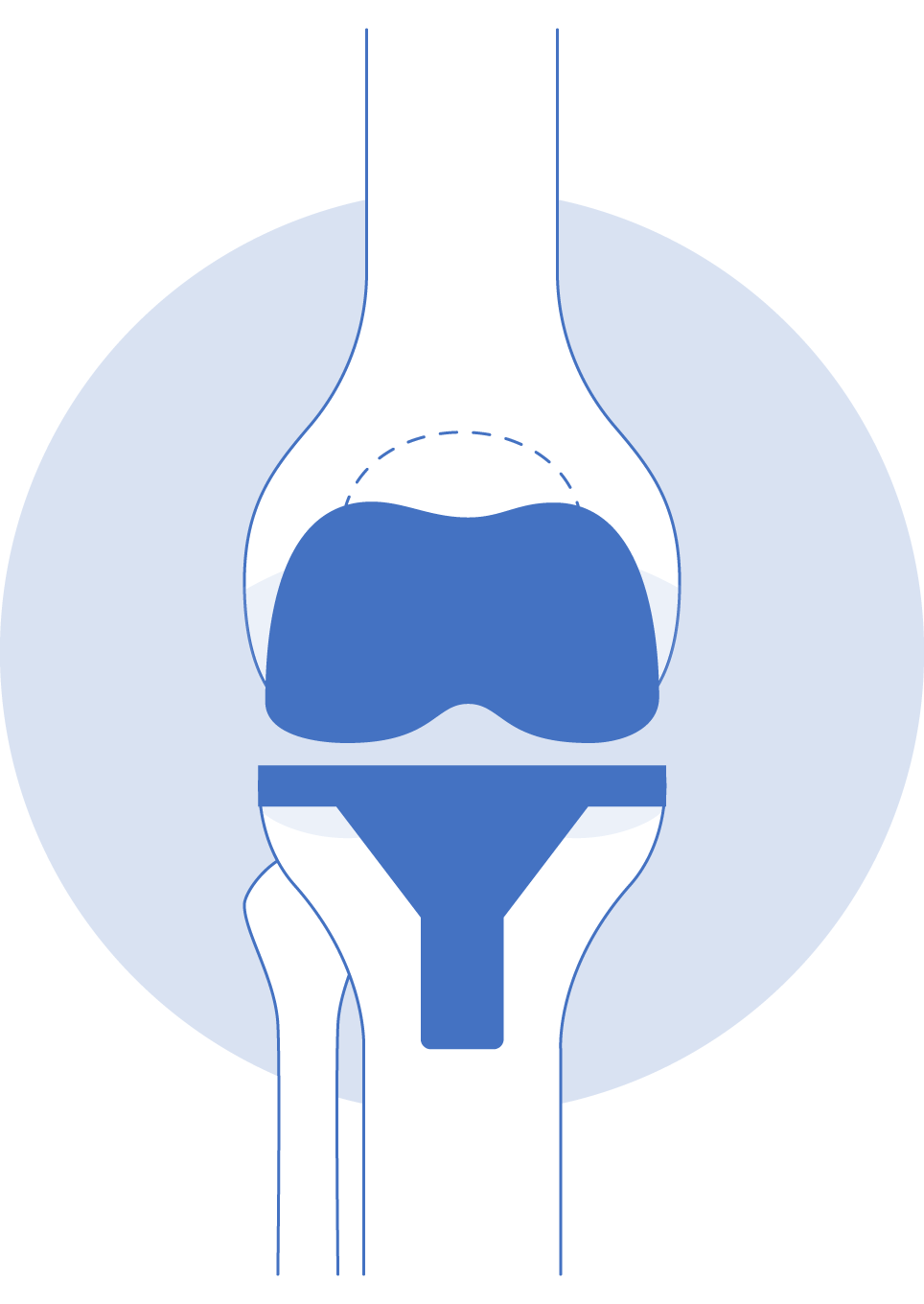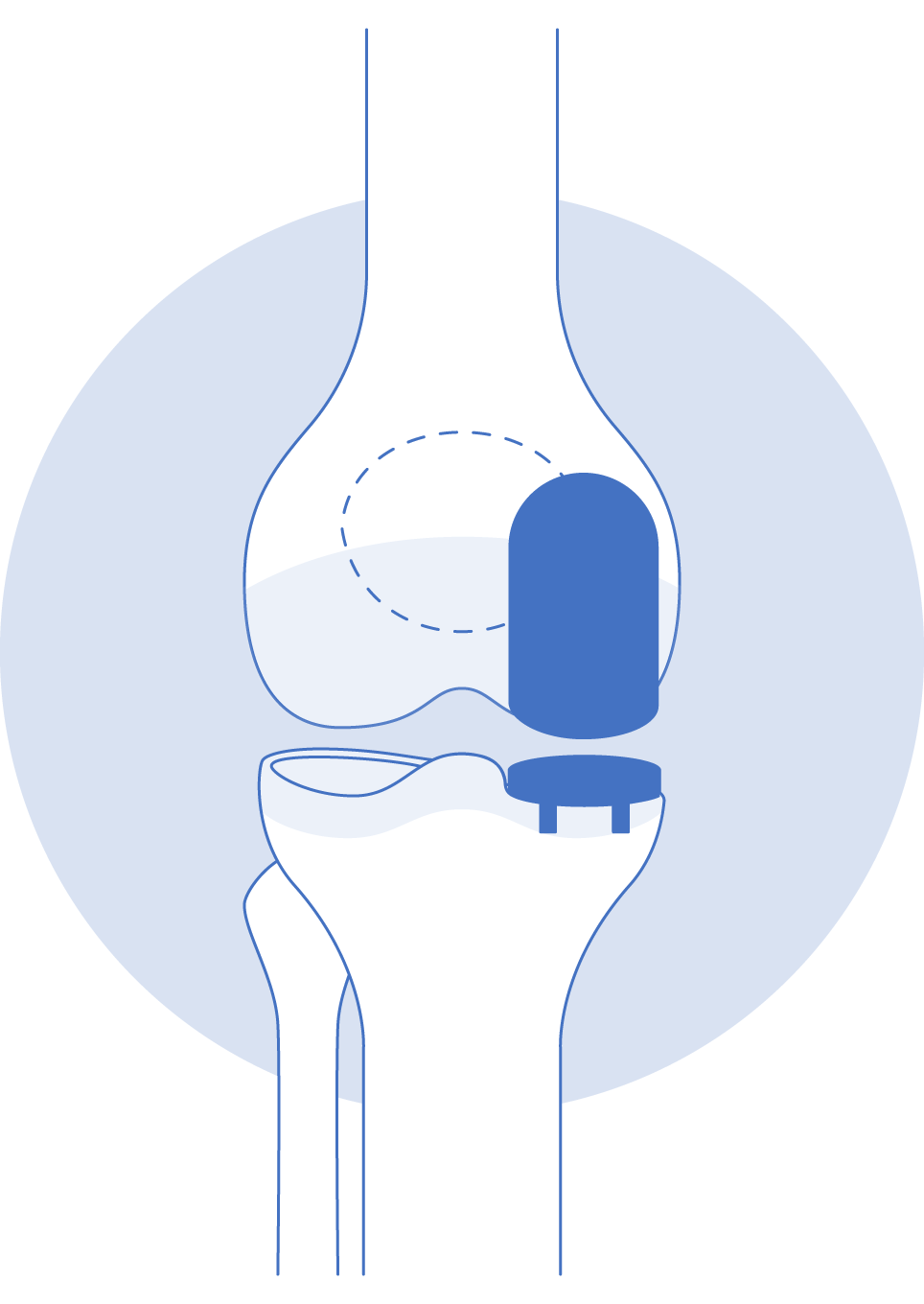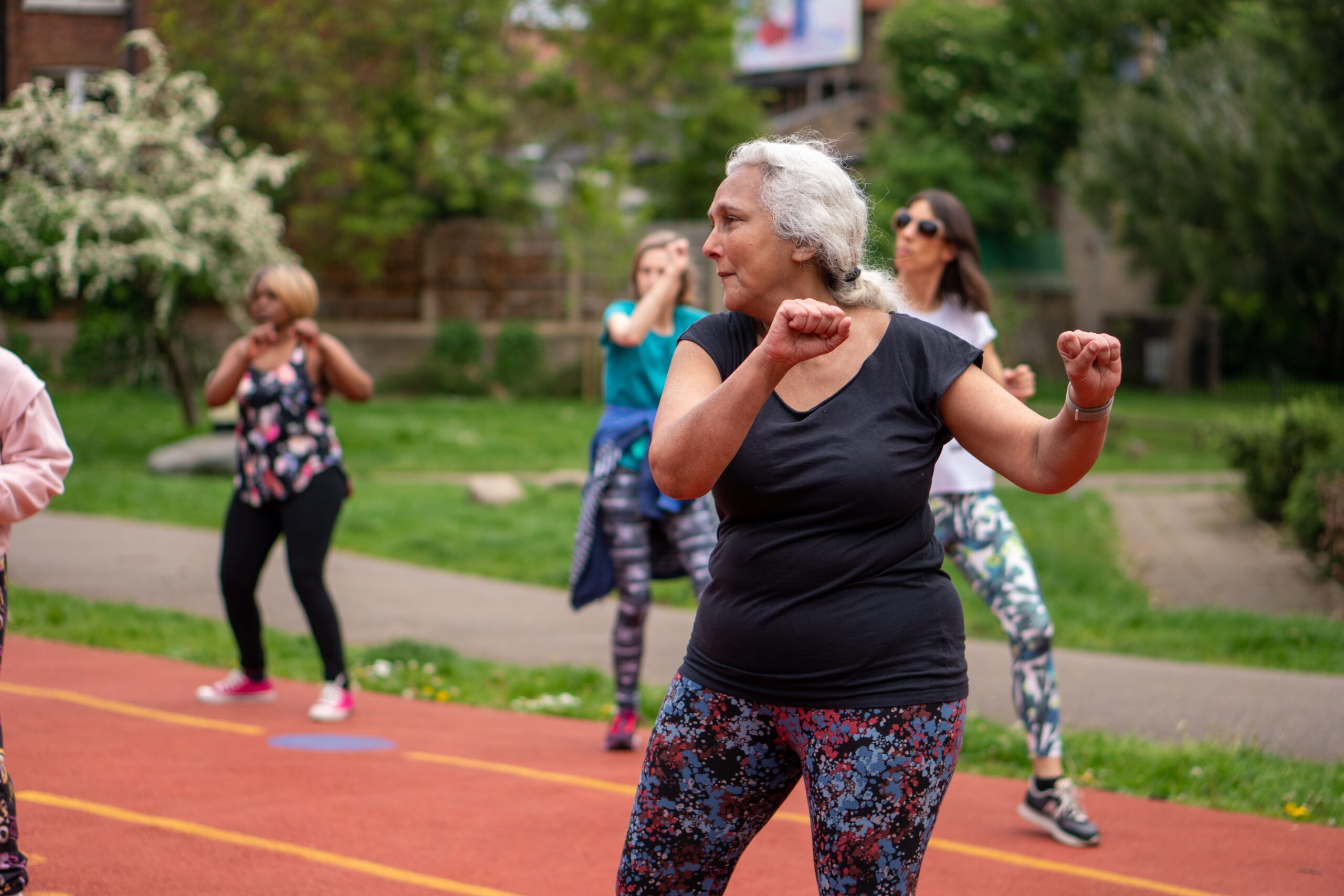



KNEE REPLACEMENT
a A knee replacement can either be a total knee replacement where all three compartments of the knee are replaced, or a partial knee replacement (also termed unicompartmental knee replacement), where just one of the three parts of the knee is replaced. The type of replacement that you are offered mainly comes down to where the arthritis is and where it is likely to progress, but patient choice is also important.
The rehabilitation programmes between different types of knee replacement are essentially the same but with a partial knee you can expect to hit targets quicker and more often progress to a higher level of function such as dynamic movements, exercise, and sports.
First 2 weeks
The most important aspects of the initial recovery are controlling swelling in the knee, preventing muscle wasting, and working towards regaining full range of knee motion
- Full weight bearing as tolerated with crutches
- Knee elevation up to the level of the heart and full ankle movements to activate calf muscles
- Cryotherapy such as ice and cold presses to reduce inflammation, pain and swelling
- Bulky dressing can be reduced the next day, the adhesive dressing is splashproof for careful washing/showering. Dressings can be touched and surrounding tissue massaged
- Start to work towards regaining full range of movement
- Activate the quadriceps muscles to try and lift the leg and push the knee out straight
- Work through the exercise physiotherapy instruction sheets
Weeks 2-6
The dressing should have been removed by 2 weeks. After this a face-to-face physiotherapy session can be useful
- Swelling is still common so continue elevation and cryotherapy
- Continue to regain full range of movement, especially once swelling has settled, and ensure that you are getting the knee as fully straight as possible and bending beyond 90 degrees
- Scar massage and multidirectional patella mobilisation can help to prevent adherence
- It is likely you will need crutches throughout this period but once normal gait (walking without a limp) has been achieved these can be stopped, ensure core strength and gluteal muscles are controlling pelvic tilt and stability
- The earliest to drive a car safely is after 4 weeks; you need to ensure you are off strong pain medication and have demonstrated safety to a responsible passenger
Weeks 6-12
It is at the start of this period when you will get your first planned surgical follow-up appointment.
- This is the period when you should start to notice the clear benefit of the knee replacement and can start to explore the new level of function that a pain free knee can give you
- Start swimming
- Start on an exercise bike – initially resistance free and gradually build from there
- Start gym type strengthening activities based on your own level of function and goals
3-12 months
You can expect ongoing improvement throughout the first post-operative year. Optimal range of knee motion is expected by approximately 6 months, dependent on a number of factors and is directly related to your pre-operative knee movement.
It is safe to build up your level of activities and test out your knee replacement but it makes sense to avoid activities that cause pain, and those that have an increased falls risk as bone fractures or ligament ruptures can occur around a knee replacement.
It is routine but not essential to have a one-year surgical follow-up with a baseline x-ray.
1-year and onwards
Be guided by your knee replacement and the level of function that you want to do in life.
There is no current evidence that having a high physical activity level after total knee replacement increases your risk of needing revision surgery when studied during the first 12 years after surgery:
https://www.sciencedirect.com/science/article/pii/S0968016022001284
Kornuijt A, Kuijer PPFM, Drumpt RA van, Siebelt M, Lenssen AF, Weegen W van der. A high physical activity level after total knee arthroplasty does not increase the risk of revision surgery during the first twelve years: A systematic review with meta-analysis and GRADE. Knee 2022

